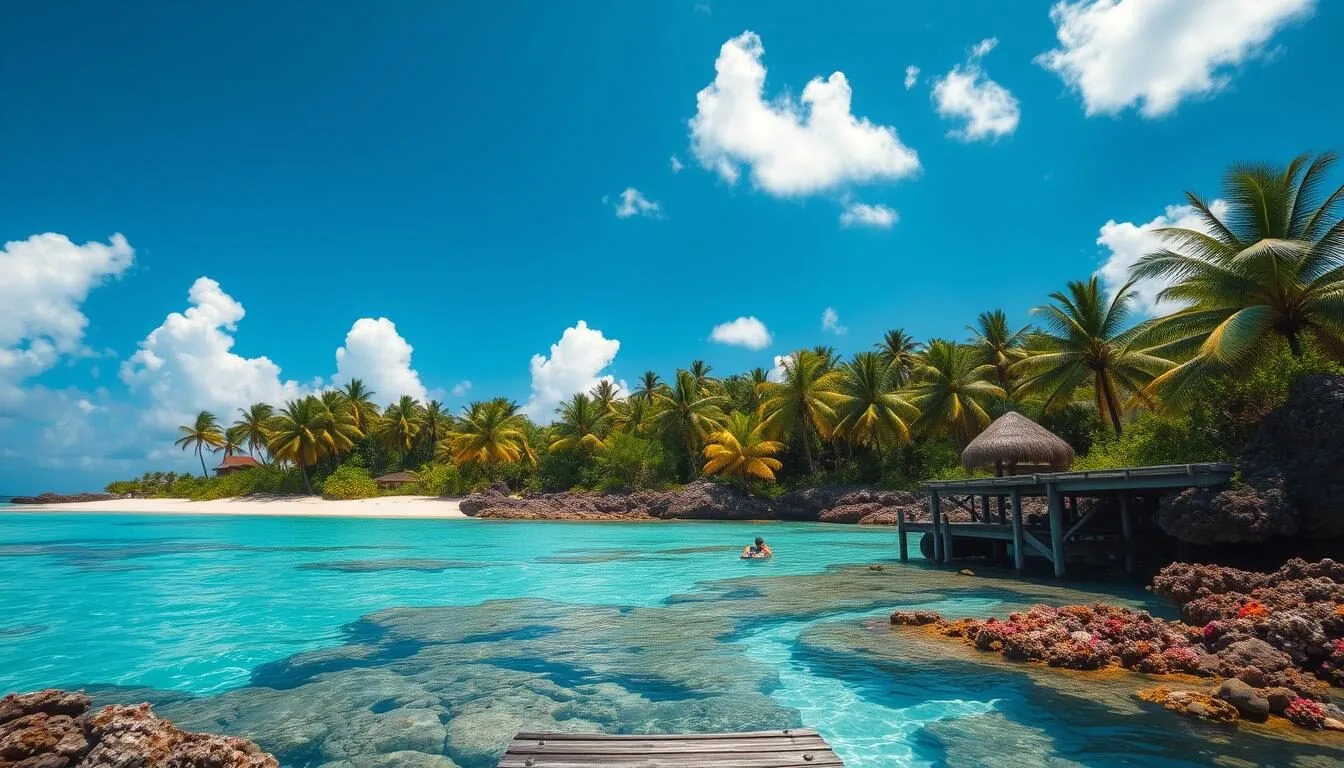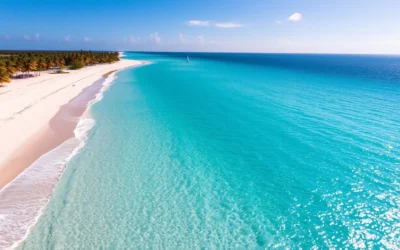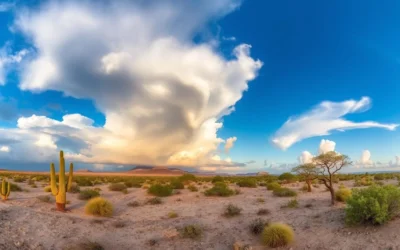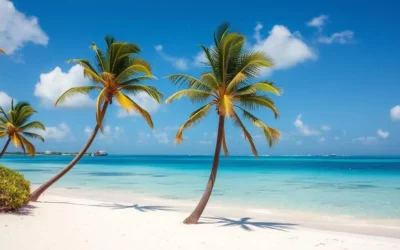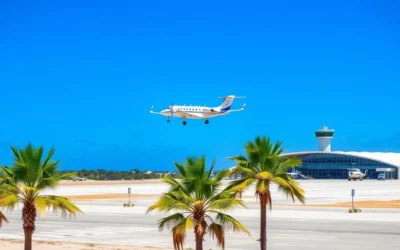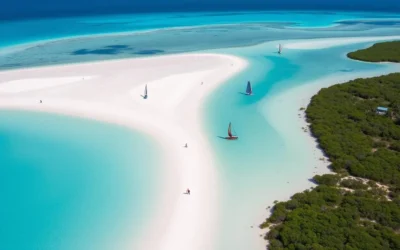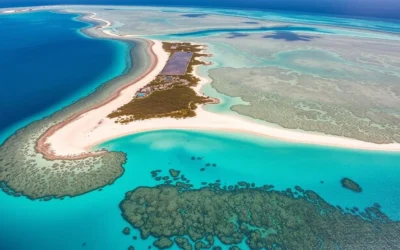✓ Accommodations✓ Flights✓ Rental Cars✓ Tours & Activities
Imagine waking up to the sound of waves gently lapping against the shore of a Caribbean island paradise. You dive into the crystal-clear waters, and a world of vibrant marine life unfolds before your eyes. This is what awaits you in Bonaire, a gem in the Dutch Caribbean known for its exceptional diving and unique landscapes.
As you explore this island, you’ll discover why it’s hailed as the “shore diving capital of the world.” With over 85 marked dive sites, Bonaire offers an unparalleled underwater experience. But it’s not just about diving; the island’s commitment to conservation and sustainable tourism means you can enjoy a range of activities while supporting eco-friendly practices.
From snorkeling and diving to exploring the island’s cultural heritage, there’s something for everyone. Get ready to experience the ultimate island getaway and make the most of your time on this Caribbean gem.
Discovering Bonaire: A Caribbean Paradise
In the heart of the Caribbean, Bonaire stands out as a unique blend of natural beauty, rich culture, and exciting activities. You can experience the best of Bonaire by exploring its pristine coral reefs and diverse landscapes.
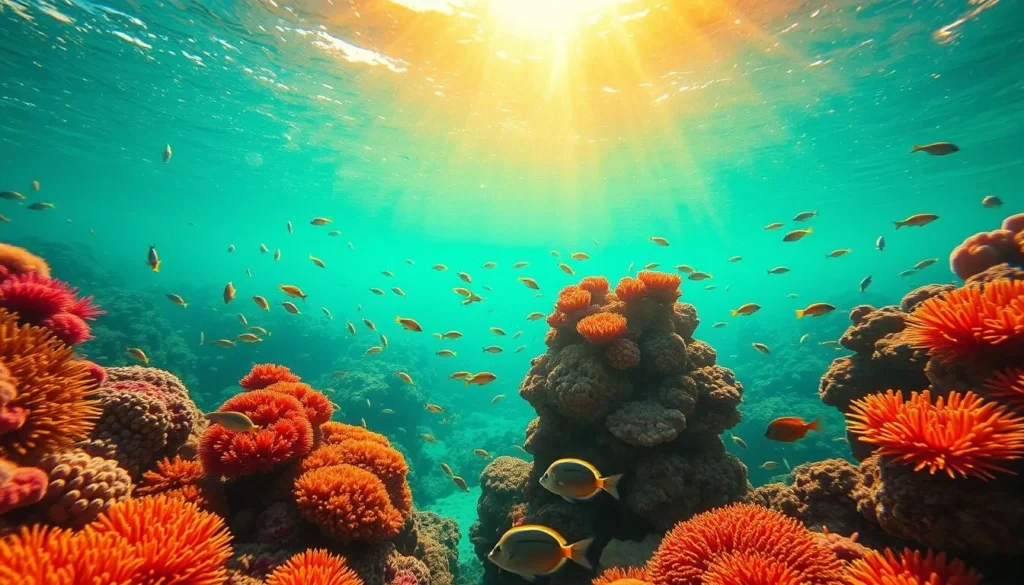
Where is Bonaire Located?
Bonaire is situated in the southern Caribbean, part of the ABC islands (Aruba, Bonaire, and Curacao). This location makes it an ideal spot for those looking to explore the Caribbean Sea and its treasures. The island’s geography is characterized by its coral reefs and diverse terrains, including desert landscapes and salt flats.
Why Visit Bonaire?
Bonaire is renowned for its exceptional marine life and is considered the “Shore Diving Capital of the World.” The island offers numerous accessible dive sites right from the beach, making it perfect for divers of all levels. Beyond its underwater ecosystems, Bonaire is committed to environmental conservation, boasting a marine park established in 1979. Visitors can enjoy a relaxed atmosphere, diverse landscapes, and a unique cultural blend influenced by Dutch, Caribbean, and South American traditions.
- Explore Bonaire’s world-renowned coral reefs and exceptional marine life.
- Experience the island’s status as the “Shore Diving Capital of the World.”
- Discover Bonaire’s commitment to conservation and sustainable tourism.
Essential Travel Information for Bonaire
To ensure a smooth and enjoyable trip to Bonaire, it’s crucial to understand the essential travel information. Here’s everything you need to know to make the most of your visit.
Best Time to Visit Bonaire
Bonaire is a year-round destination, but the best time to visit depends on your preferences. The island enjoys a warm climate throughout the year, with average temperatures ranging from 78°F to 88°F (25°C to 31°C). If you’re looking for optimal diving conditions, consider visiting between April and June or September and November when the seas are generally calmer.
Getting Around the Island
Getting around Bonaire is relatively easy, with several options available. You can rent a car, scooter, or bike to explore the island at your own pace. Many rental companies offer a range of vehicles, and some even provide delivery to your accommodation. Alternatively, you can use the public bus system or hire a taxi for shorter trips.
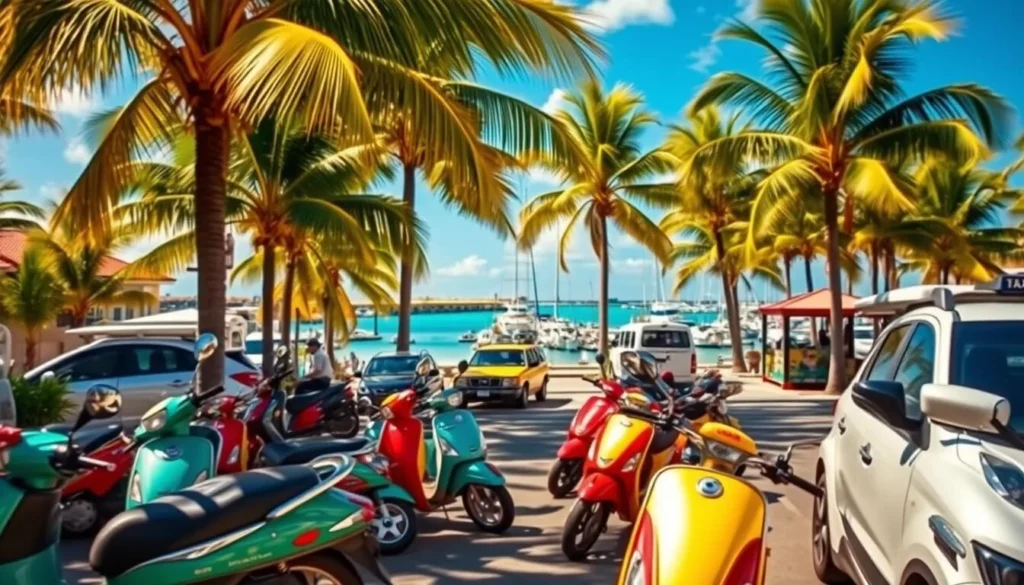
Bonaire Tourism Tax and Nature Fee
Before arriving in Bonaire, you’ll need to pay the mandatory Bonaire Visitor Tax, which is $98 per person. This fee includes the $75 Bonaire government tourism tax. Cruise ship passengers pay a reduced fee of $10, collected by the cruise line. Additionally, you’ll need to pay a Nature Fee to access protected areas like the Bonaire National Marine Park and Washington Slagbaai National Park. This fee is valid for a full calendar year, making it a great value for return visitors.
| Fee Type | Cost | Details |
|---|---|---|
| Bonaire Visitor Tax | $98 per person | Includes $75 Bonaire government tourism tax |
| Cruise Ship Passenger Tax | $10 | Collected by the cruise line |
| Nature Fee | Variable | Valid for a full calendar year |
By understanding these essential travel details, you’ll be well-prepared for your trip to Bonaire and can focus on enjoying everything the island has to offer.
Bonaire National Marine Park: Underwater Paradise
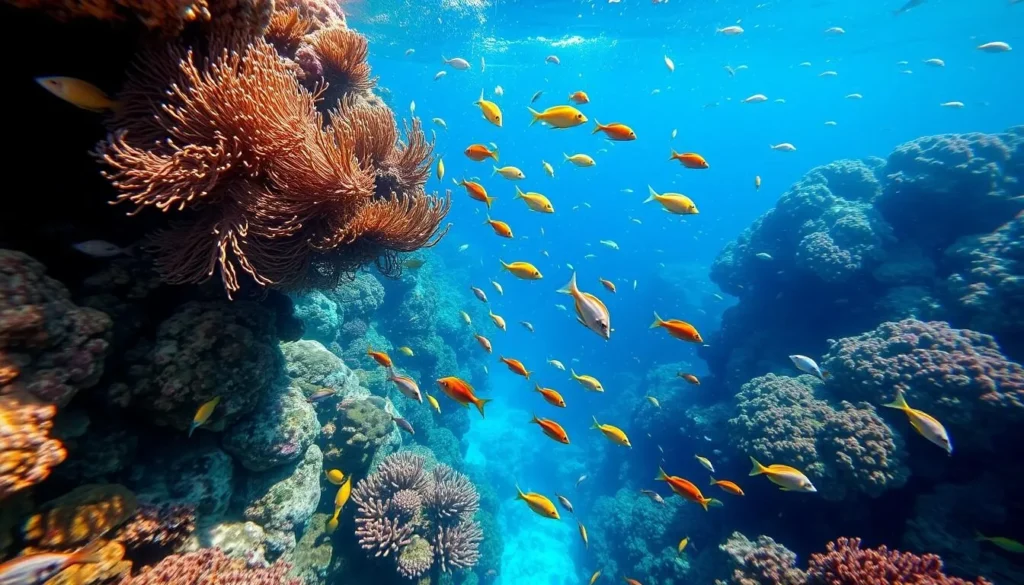
With its crystal-clear waters and diverse ecosystems, Bonaire National Marine Park is a must-visit for any ocean enthusiast. The park spans over 6,700 acres, encompassing coral reefs, seagrass beds, and mangrove forests, creating a rich habitat for an incredible array of marine life.
Marine Conservation Efforts
Bonaire National Marine Park is renowned for its conservation efforts, which have significantly contributed to the health and biodiversity of its marine ecosystems. The park’s protected status has allowed fish populations to thrive, making it a standout destination in the Caribbean. Conservation initiatives include measures to protect coral reefs and manage fishing practices sustainably.
Marine Life You’ll Encounter
As you explore the park, you’ll have the opportunity to encounter a vast array of marine life. With over 350 species of fish and 57 species of coral, the underwater world is teeming with activity. You might spot iconic creatures such as sea turtles, eagle rays, parrotfish, and barracuda. The park is also home to unique critters like seahorses and frogfish, making it a paradise for underwater photographers. The excellent visibility, often exceeding 100 feet, allows for an immersive experience, giving you a glimpse into the diverse life that thrives beneath the surface.
The different marine ecosystems within the park support various stages of marine life development. Coral reefs provide a habitat for a multitude of species, while seagrass beds and mangroves serve as crucial nurseries for many marine creatures. This biodiversity is a testament to the park’s effective conservation and management.
Best Scuba Diving Spots in Bonaire
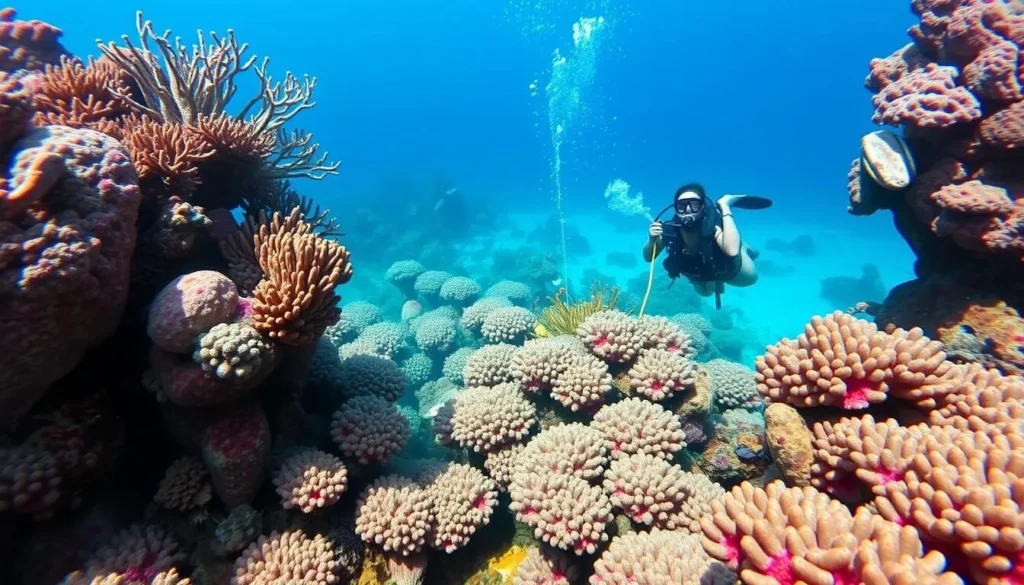
With its crystal-clear waters and vibrant marine life, Bonaire offers some of the best diving experiences in the Caribbean. The island is surrounded by a healthy reef system, making it an ideal location for both beginners and experienced divers.
Shore Diving Sites
Bonaire is famous for its accessible shore diving sites, allowing you to dive directly from the beach. Many of these sites are located near hotels and dive shops, making it convenient to plan your dives. The island’s clear waters provide excellent visibility, typically ranging from 50 to 100 feet, allowing you to fully appreciate the underwater landscape.
Boat Diving Excursions
For those looking to explore beyond the shore, Bonaire offers numerous tours and boat diving excursions. These trips take you to more remote areas of the marine park, such as Klein Bonaire, which is known for its pristine reefs and abundant marine life. Specialized tours, including night dives, deep dives, and photography-focused excursions, are available through reputable dive operators on the island. These guided tours not only enhance your diving experience but also ensure safety and help you spot elusive marine life.
Top Snorkeling Locations for All Levels
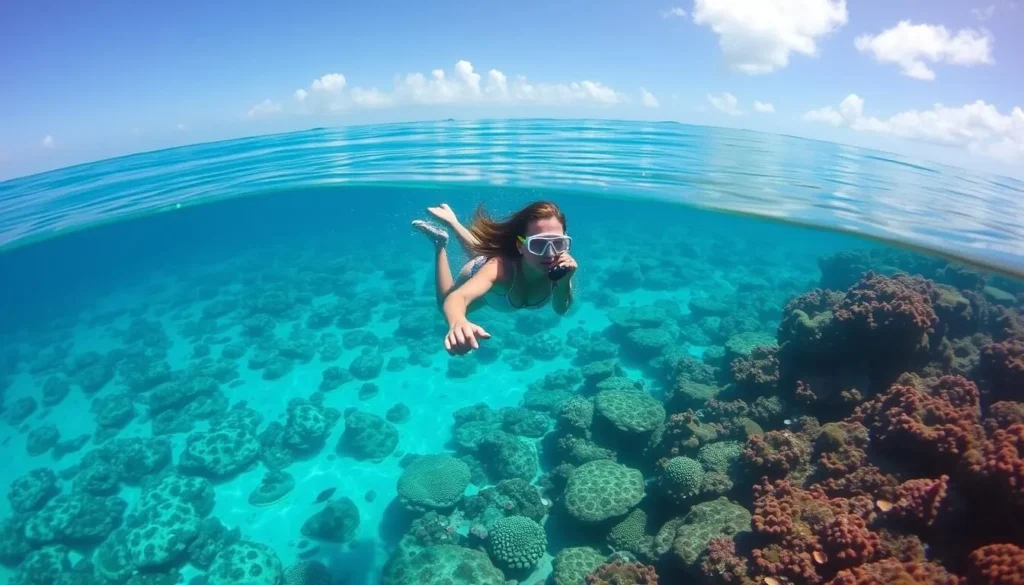
With its crystal-clear waters and vibrant marine life, Bonaire is a snorkeler’s paradise. The island offers numerous snorkeling locations that cater to all levels, from beginners to experienced enthusiasts. Whether you’re looking for shallow waters or deeper dives, Bonaire’s beaches provide an unforgettable snorkeling experience.
1000 Steps Beach
1000 Steps Beach is a popular snorkeling spot, known for its accessibility and rich marine life. The beach gets its name from the staircase leading down to the shore. As you snorkel in the calm waters, you’ll encounter a variety of fish species and colorful coral formations.
Bachelor’s Beach
Bachelor’s Beach, also known as Playa Lechi, is a secluded beach that offers an idyllic snorkeling experience. The beach is surrounded by rocky shores, creating a natural habitat for marine life. Snorkelers can explore the underwater world, discovering an array of fish and coral species in the clear water.
Karpata
Karpata is a unique snorkeling site featuring both natural coral formations and underwater art installations. The site’s topography includes a shallow reef area ideal for beginners, gradually sloping to deeper areas. Snorkelers can explore the distinctive underwater statues, which serve as both art and artificial reef structures, attracting a variety of marine life.
Washington Slagbaai National Park: Natural Beauty
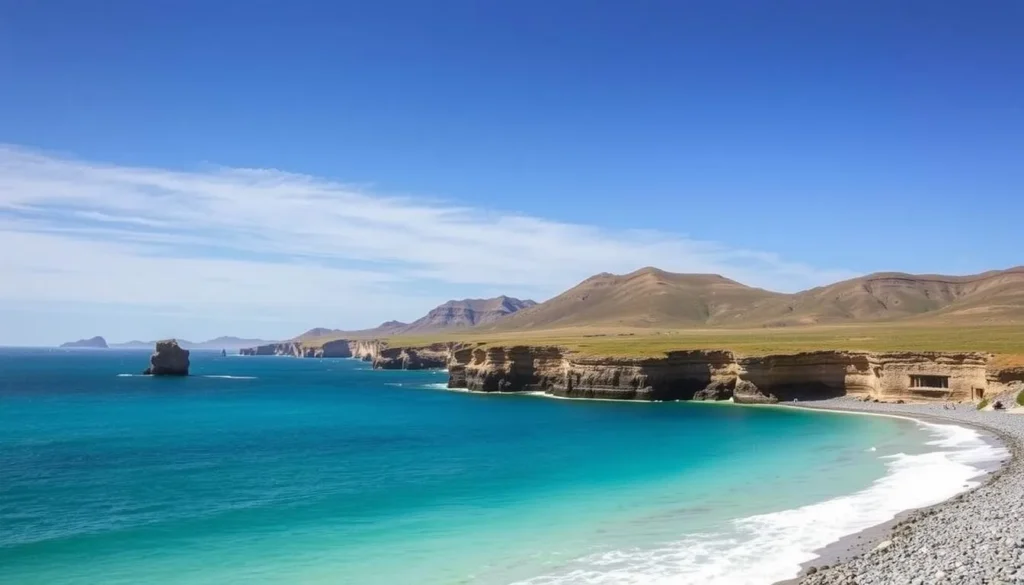
The Washington Slagbaai National Park on Bonaire is a treasure trove of natural wonders, waiting to be discovered. As the island’s first national park, it offers a unique blend of landscapes, from cactus forests to shorelines, and is home to a diverse range of wildlife.
Hiking Trails and Viewpoints
The park features several hiking trails that cater to different levels of hikers, offering breathtaking viewpoints and the chance to explore the island’s natural beauty up close. As you hike through the park, you’ll be treated to stunning vistas of the surrounding landscape and the ocean beyond.
Key Trails and Viewpoints: The trails range from easy to challenging, ensuring there’s something for everyone. Be sure to stop at the designated viewpoints for panoramic views of the island.
Wildlife Spotting Opportunities
Washington Slagbaai National Park is a haven for wildlife enthusiasts. The park is home to a variety of species, including flamingos, iguanas, parakeets, and wild donkeys. The beaches within the park are also crucial nesting areas for four different species of sea turtles.
Responsible Wildlife Viewing: To minimize disturbance to the animals and their habitats, it’s essential to follow the park’s guidelines for wildlife viewing. Keep a safe distance, stay on designated trails, and never feed the wildlife.
Klein Bonaire: Day Trip to Paradise
Discover the unspoiled beauty of Klein Bonaire on a day trip. This tiny island off the coast of Bonaire is a paradise waiting to be explored.
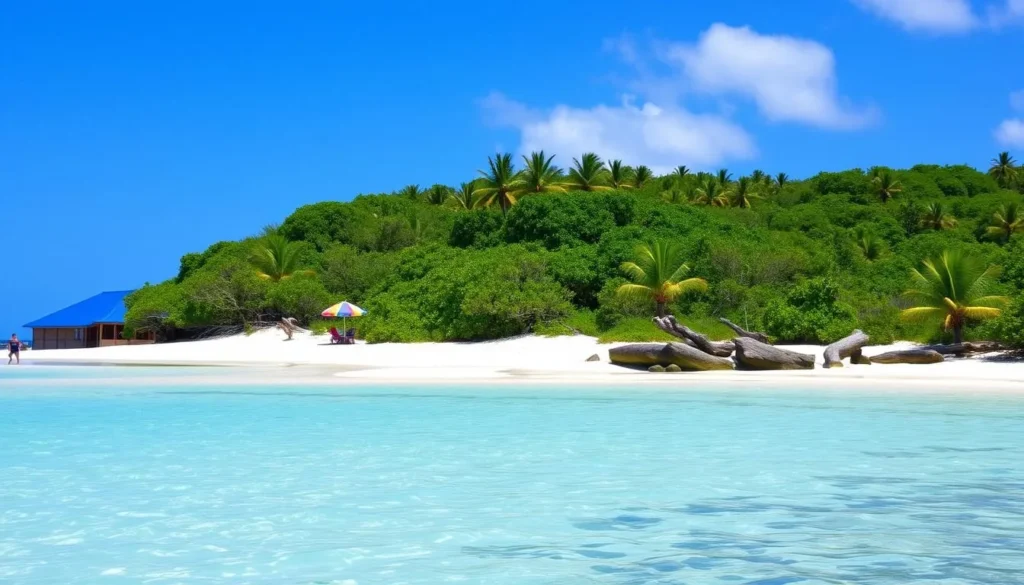
No Name Beach
No Name Beach on Klein Bonaire is a must-visit spot for its pristine waters and powdery white sand. It’s ideal for snorkeling and diving, with an abundance of marine life.
How to Get to Klein Bonaire
The most convenient way to reach Klein Bonaire is by water taxi, which departs every 25 minutes from Karel’s Beach Bar and Eden Beach Resort. You can also opt for organized boat tours that include snorkeling, diving, and exploring nature trails. For a more exclusive experience, consider private boat charters.
For a day trip, remember to pack water, food, and sun protection. Allocate at least 4-6 hours to fully appreciate Klein Bonaire’s natural beauty.
Flamingo Viewing: Bonaire’s Pink Residents
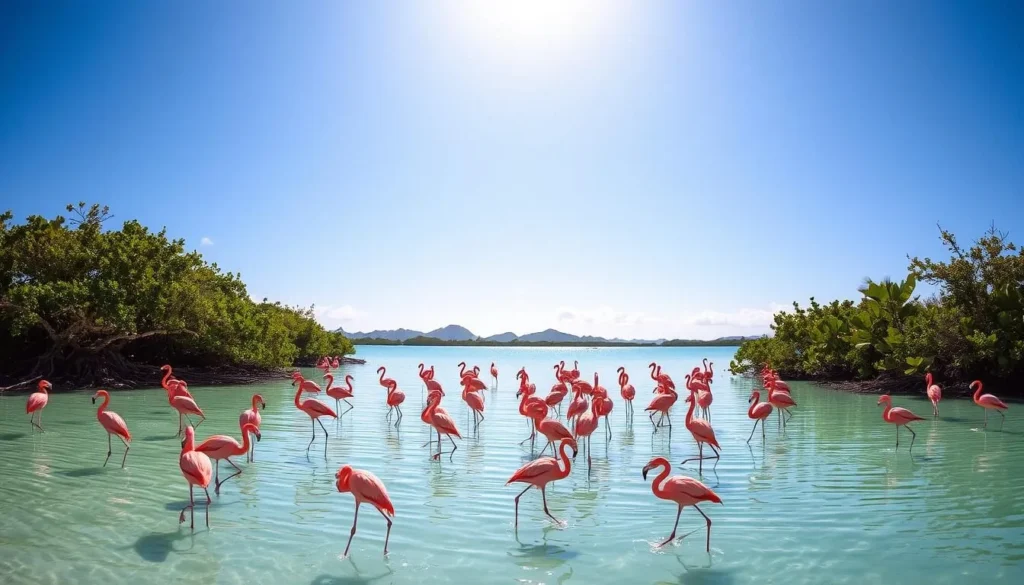
As you explore Bonaire, you’ll discover that the island is a haven for flamingos, with several key locations to observe these birds. The island’s unique ecosystems provide an ideal environment for flamingos to thrive.
Goto Lake
Goto Lake is one of the island’s significant spots for flamingo viewing. This lake is a place where you can observe these birds in their natural habitat. The surrounding area is rich in biodiversity, making it a fascinating spot for nature lovers.
Pekelmeer Flamingo Sanctuary
The Pekelmeer Flamingo Sanctuary, located on the southern tip of Bonaire, is a protected breeding ground for flamingos. This sanctuary is near the salt pans, where the high salt concentration creates an ideal environment for these birds. The unique ecosystem supports thousands of flamingos, making it a must-visit for any bird enthusiast.
Visitors can observe flamingos from designated viewing points, ensuring that these magnificent creatures are not disturbed. The sanctuary is one of only four flamingo breeding sites in the Caribbean, highlighting its ecological importance. The relationship between the salt production industry and flamingo conservation efforts is a unique aspect of this sanctuary.
For the best flamingo viewing experience, consider visiting during the early morning or late afternoon when the light is optimal for photography. This allows you to capture stunning images of these beautiful birds in their natural habitat.
Southern Bonaire: Salt Pans and History
As you explore Southern Bonaire, you’ll uncover the island’s rich history and industrial past. This region is a testament to the island’s diverse heritage, showcasing both natural wonders and historical landmarks.
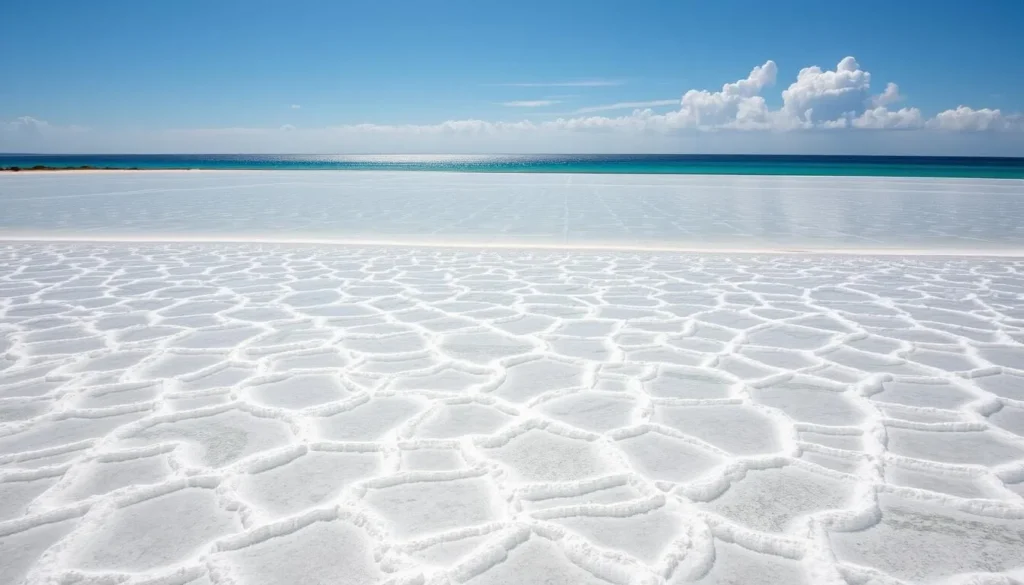
Salt Pans (Zoutpannen)
The salt pans, known as “Zoutpannen” in Dutch, are a significant part of Bonaire’s industrial heritage. These pans were used to harvest salt, a valuable commodity in the island’s economy. The salt pans are a reminder of the island’s historical connection to the salt trade, a crucial aspect of Bonaire’s history.
Historic Slave Huts
Further down the rocky coast, you’ll find the historic slave huts, a somber reminder of Bonaire’s colonial past. These small stone structures were used to house enslaved workers who harvested salt during the week. On weekends, they would make the long journey back to their homes in Rincon, a trek that took around 7-10 hours. The slave huts stand as a poignant reminder of the harsh living conditions and the long history of slavery on the island.
Visiting these sites provides a unique insight into Bonaire’s complex history and cultural heritage. The preservation of these structures is crucial for understanding the island’s past and its connection to the Dutch colonial salt trade.
Bonaire’s Best Beaches
With its crystal-clear waters and powdery white sand, Bonaire’s beaches are a true Caribbean gem. The island offers a variety of beaches, each with its unique charm and attractions.

Sorobon Beach at Lac Bay
Sorobon Beach, located within Lac Bay, is a favorite among visitors for its tranquil atmosphere and picturesque views. This beach is perfect for those looking to relax and enjoy water activities. The bay’s calm waters make it an ideal spot for snorkeling and spotting marine life.
Te Amo Beach
Te Amo Beach is a beach lover’s paradise, offering a unique experience with its white sand and proximity to the airport. Visitors can enjoy snorkeling just offshore, where they might encounter colorful reef fish and occasional sea turtles. The beach’s location allows for the unique experience of watching planes land and take off, making it a hit with aviation enthusiasts.
While the beach itself has limited facilities, the nearby amenities cater to visitors’ needs. It’s advisable to visit during the less crowded hours to fully enjoy this beach.
Water Sports Beyond Diving
Bonaire is a paradise for water sports enthusiasts, offering a range of activities beyond scuba diving. The island’s consistent trade winds and crystal-clear waters create ideal conditions for various water sports.
Windsurfing at Lac Bay
Lac Bay is a haven for windsurfers, with its shallow waters and consistent breezes making it perfect for both beginners and experienced riders. You can take windsurfing lessons in Bonaire to improve your skills or rent equipment to enjoy the bay at your own pace.
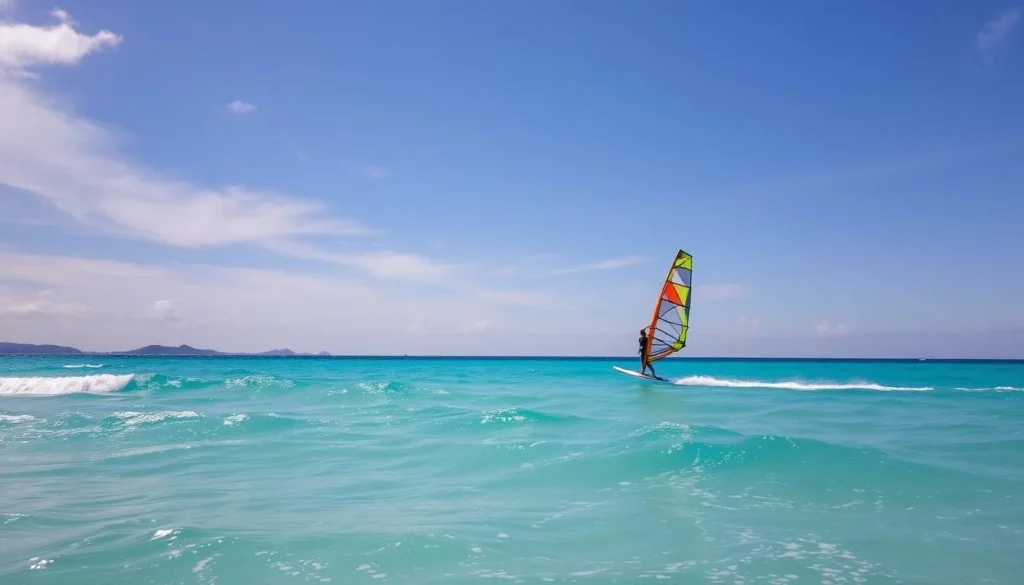
Kitesurfing at Atlantis Beach
Atlantis Beach, also known as Kite Beach, is Bonaire’s premier kitesurfing destination. Located on the island’s southern coast near the salt pans, it offers a unique backdrop for this thrilling sport. The beach has a long stretch of shallow, turquoise water that’s perfect for beginners, as well as more challenging areas with waves and choppy waters for advanced riders.
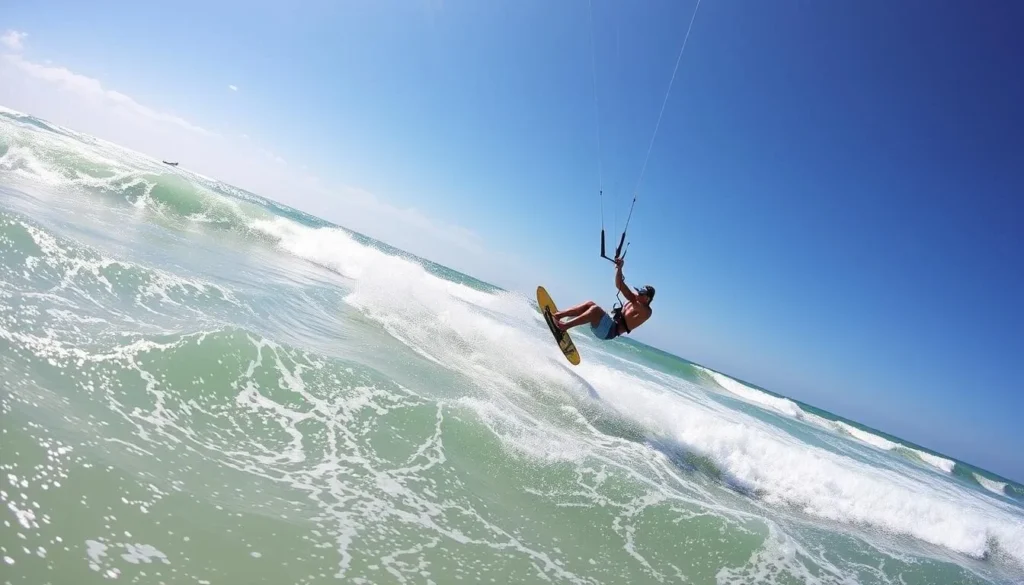
Bonaire: Best Things to Do for Wildlife Lovers
Bonaire’s commitment to wildlife conservation makes it an attractive destination for those passionate about protecting and preserving the natural world. The island is home to a variety of unique and endemic species, offering a range of activities for wildlife enthusiasts.
Donkey Sanctuary
The Bonaire Donkey Sanctuary is a heartwarming destination that provides a safe haven for donkeys in need. Visitors can interact with these gentle creatures and learn about the sanctuary’s efforts to care for and protect them.
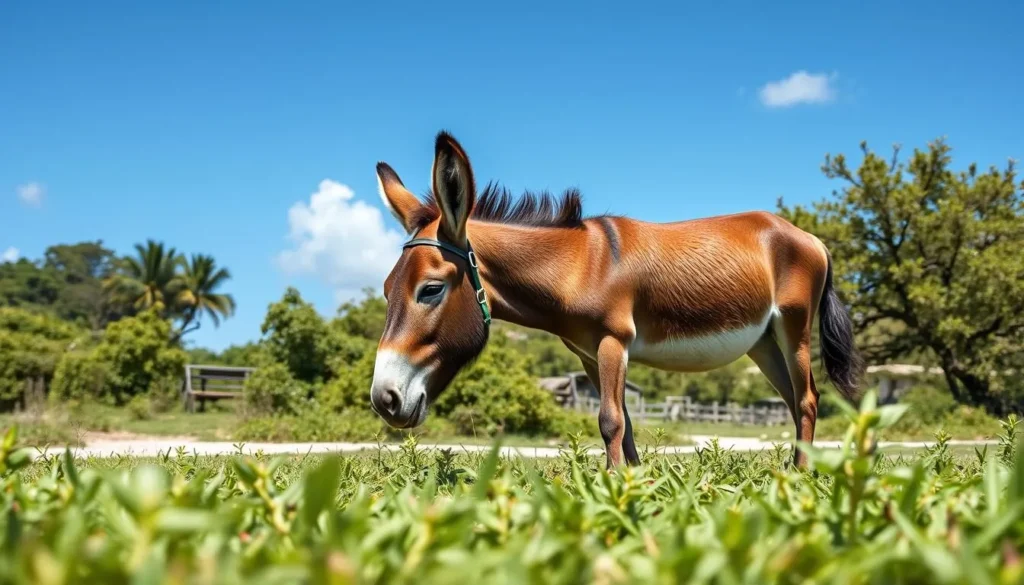
Sea Turtle Conservation
Sea Turtle Conservation Bonaire (STCB) is a non-profit organization dedicated to protecting the island’s sea turtle population. Four species of turtles can be found in Bonaire’s waters: green, hawksbill, loggerhead, and leatherback, all of which are protected due to their conservation status.
Visitors can participate in nest monitoring conservation patrols on Klein Bonaire from May to November. These patrols, which last between 3-5 hours, offer a unique opportunity to learn about sea turtle biology and the challenges they face. Tickets are $40 USD per person, and reservations can be made by emailing cepa@bonaireturtles.org or calling (+599)7172225.
Cultural Experiences in Bonaire
As you explore Bonaire, you’ll discover a rich cultural heritage that blends Dutch, African, and Caribbean influences. The island’s history and traditions are evident in its charming villages, vibrant markets, and historic landmarks.
Rincon Village
Rincon, the oldest village on the island, is a must-visit for cultural enthusiasts. This historic village is known for its traditional architecture and lively atmosphere. You can explore the village’s narrow streets, visit local artisans, and enjoy traditional Bonairean cuisine at one of the village eateries. Rincon is also famous for its annual festivals, which showcase the island’s music, dance, and culture.
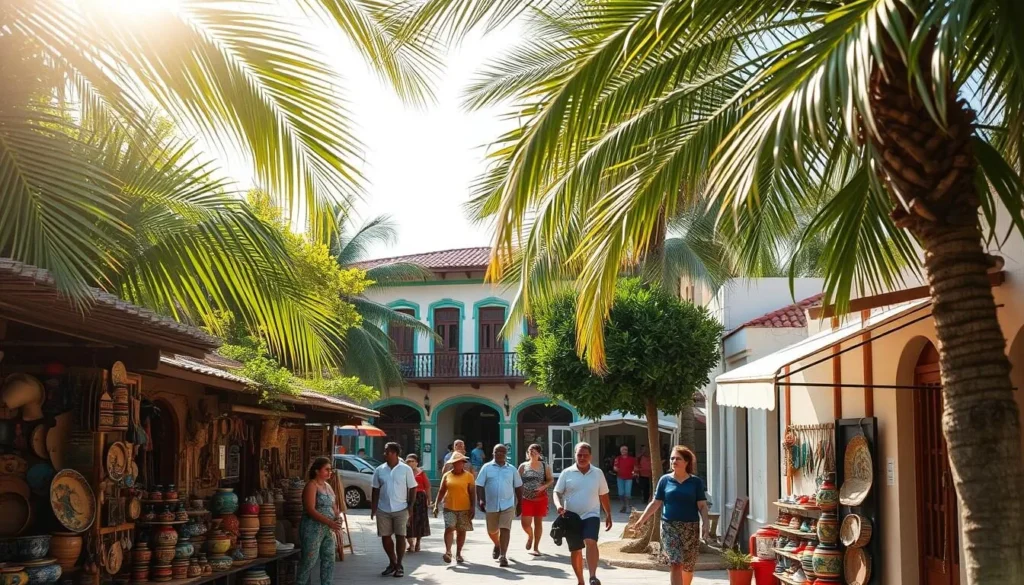
Kralendijk: Bonaire’s Capital
Kralendijk, the island’s capital, is a charming city featuring colorful Dutch colonial architecture and a relaxed atmosphere. You can visit Fort Oranje, explore the Terramar Museum, and stroll along the waterfront promenade. The city offers a range of shopping opportunities, from local crafts and souvenirs to international brands at the cruise port. Kralendijk is also known for its diverse dining scene, featuring everything from local Bonairean cuisine to international restaurants. Be sure to visit the weekly Wilhelmina Park market to purchase local products and interact with residents.
Unique Activities in Bonaire
When visiting Bonaire, you’ll discover a variety of unique experiences that showcase the island’s natural beauty and culture. Beyond its renowned diving and snorkeling opportunities, Bonaire offers a range of activities that cater to different interests and preferences.
Land Sailing
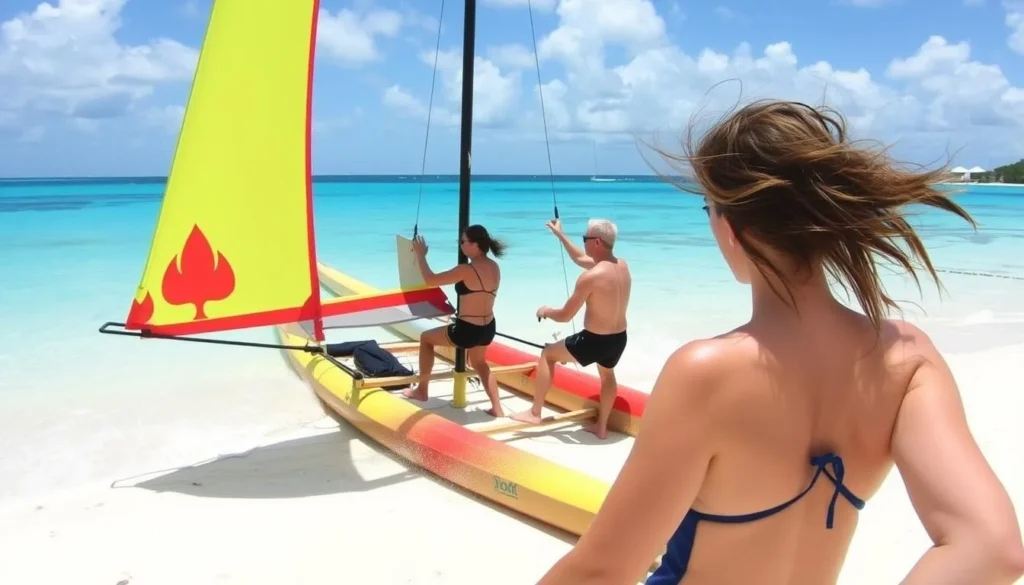
Land sailing, also known as sand yachting, is an exhilarating experience on Bonaire’s sandy beaches. This activity involves navigating a lightweight, three-wheeled cart propelled by the wind. It’s an excellent way to enjoy the island’s breezy conditions while experiencing the thrill of gliding across the sand.
Seru Largu Viewpoint
Seru Largu is one of Bonaire’s best viewpoints, offering panoramic vistas from its central elevated position. At 120m (394ft), it’s not the highest point on the island, but its location makes it an ideal lookout. You can easily reach Seru Largu by car via a paved road just minutes from Kralendijk. From the summit, you’ll enjoy stunning views of Kralendijk, the southern coastline, and Klein Bonaire. The monument at the top, inscribed with ‘Kristu Ayera Awe Semper’, adds cultural significance to this natural wonder. Visiting at sunrise or sunset creates spectacular photo opportunities. You can also bring a picnic to enjoy at the provided tables while taking in the breathtaking views.
Best Places to Eat in Bonaire
Bonaire’s dining scene is characterized by its blend of traditional and modern flavors. You’ll find a variety of restaurants serving everything from fresh seafood to international cuisine.
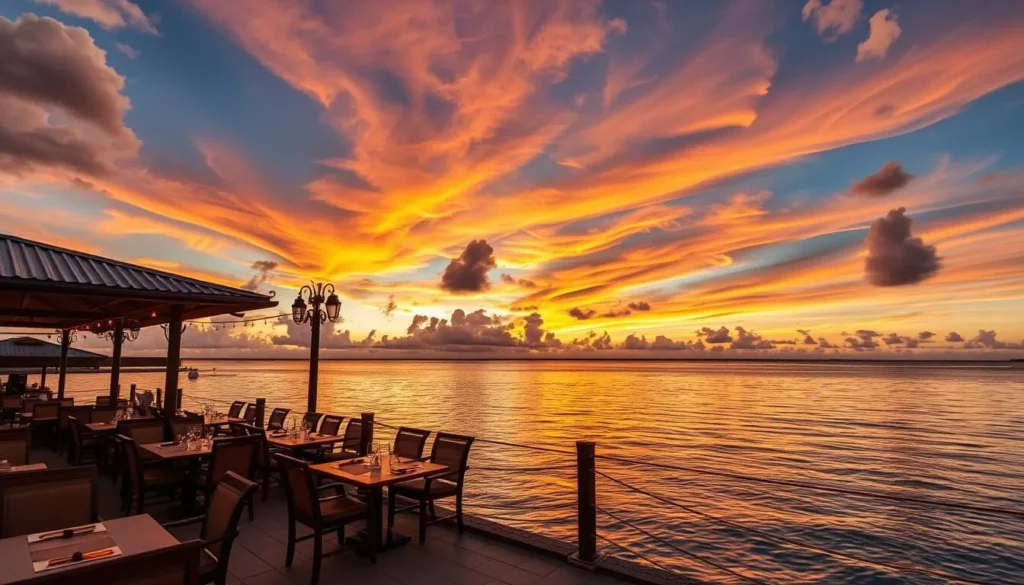
Local Cuisine to Try
Bonaire’s local cuisine is a fusion of Caribbean, Latin American, and Dutch flavors. Be sure to try dishes featuring fresh fish, conch fritters, and traditional island spices. Many restaurants incorporate local ingredients into their menus, offering an authentic taste of the island.
For a truly local experience, visit Blue Iguana Cantina, known for its vibrant atmosphere and delicious Mexican-inspired dishes.
Top-Rated Restaurants
For evening dining, Bonaire offers several top-rated restaurants. Steakhouse, JiJi Asian Kitchen, and Cucina del Capitano are highly recommended for their specialty cuisine and excellent service. These restaurants offer a unique dining experience, with a focus on fresh, locally sourced ingredients.
For a more casual dining experience, Pizzeria del Capitano is a great option, serving wood-fired pizzas in a cozy setting.
Conclusion: Planning Your Perfect Bonaire Adventure
Whether you’re a seasoned diver or just looking to relax, Bonaire’s unique blend of adventure and tranquility will captivate you. The island offers a diverse range of best things to do, from exploring the Bonaire National Marine Park to experiencing the local culture in Rincon Village. To fully appreciate Bonaire, consider a trip of 7+ days, allowing you to balance water activities like diving and snorkeling with land-based exploration.
Remember to respect Bonaire’s natural environment and support conservation efforts by paying the tourism tax and nature fee. With its commitment to sustainability, Bonaire is a model for eco-friendly tourism in the Caribbean. As you plan your trip, don’t forget to pack the right gear for your activities and enjoy the island’s relaxed pace.
The above is subject to change.
Check back often to TRAVEL.COM for the latest travel tips and deals.
